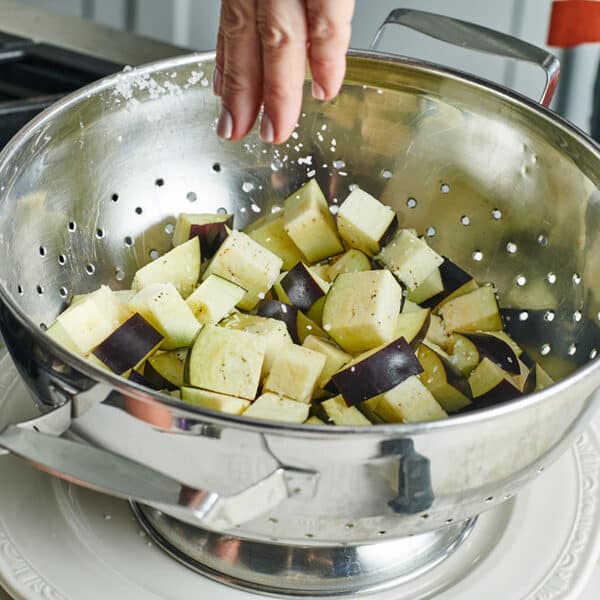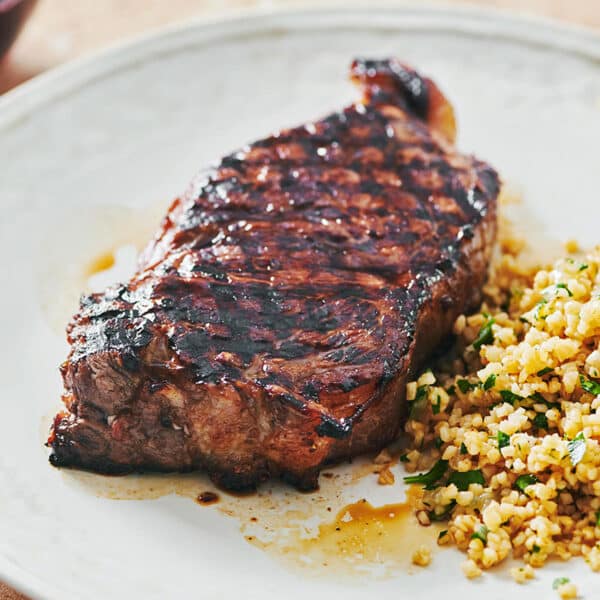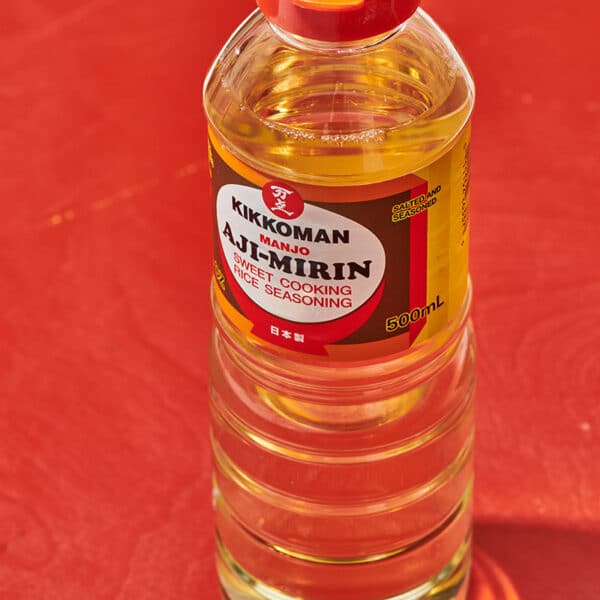How to Cook With Lemongrass
on Jan 24, 2024
This post may contain affiliate links. Please read our disclosure policy.
Everything you need to know about preparing and cooking lemongrass. This fragrant and citrusy ingredient is integral to Southeast Asian cooking.
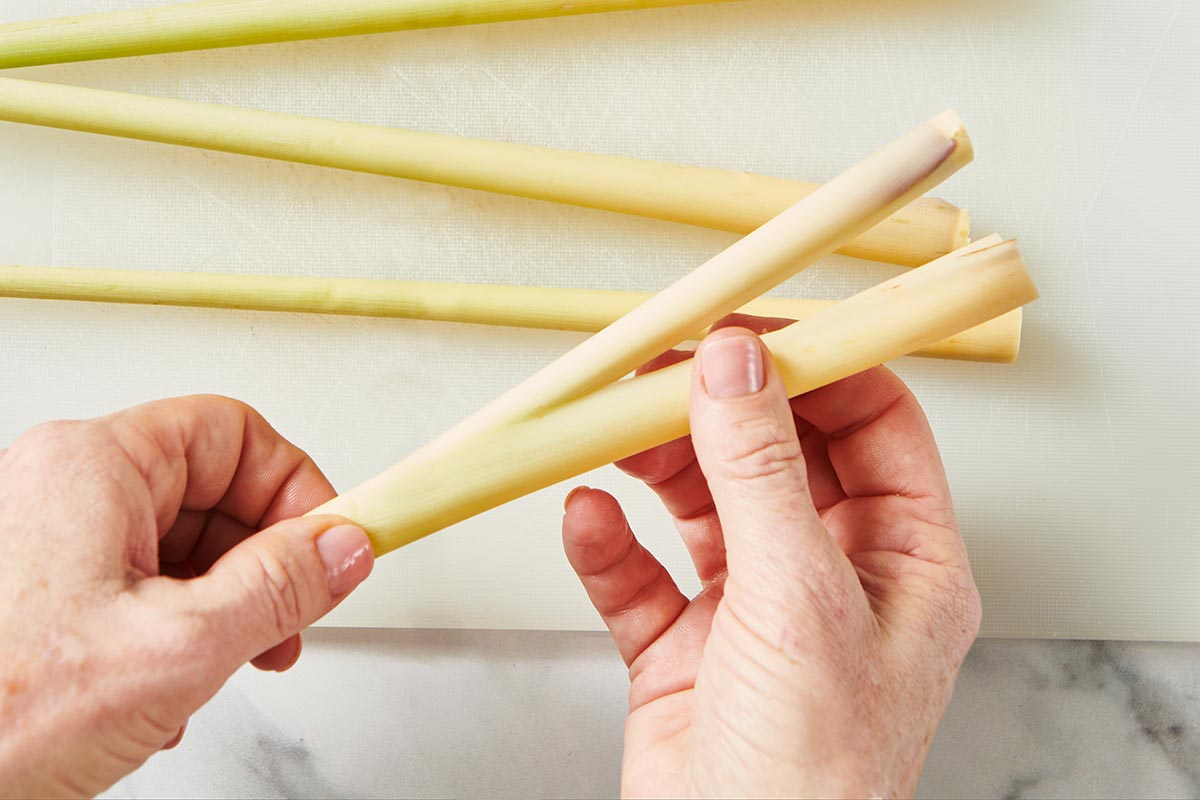
The flavor and aroma of lemongrass are citrusy, fresh, and slightly magical. Most of us have encountered lemongrass in a Thai, Vietnamese, or other Southeast Asian restaurant or setting. It adds a delicate, lemony, and ever-so-slightly minty flavor to dishes like soups, curries, stir-fries, and salads. It works well with all kinds of ingredients, from spicy to savory. It can also be the base of a soothing tea.
What's In This Post?
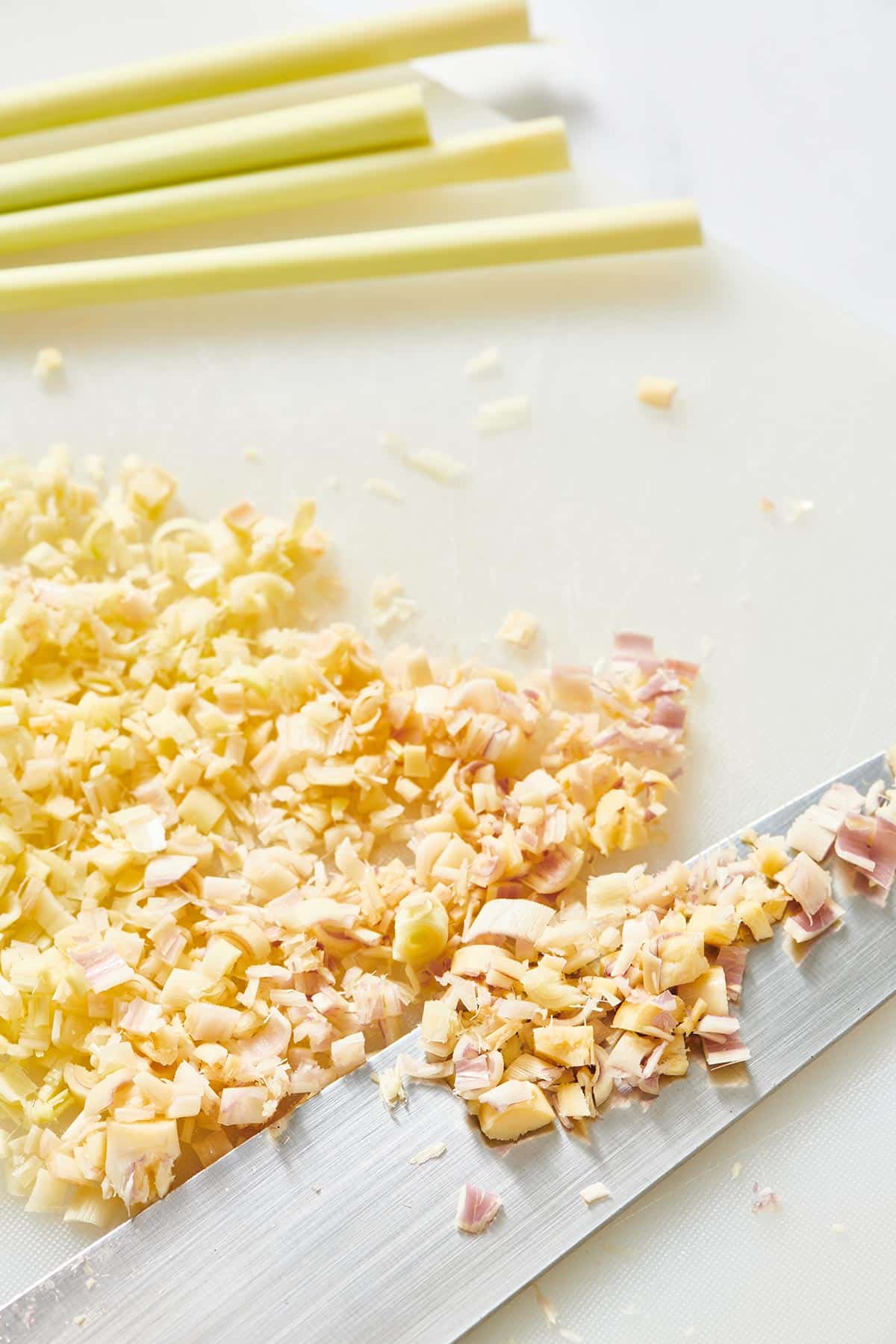
How to Cook with Lemongrass: Everything you need to know about preparing and cooking this fragrant and citrusy ingredient, so integral to Southeast Asian cooking.
By signing up, you agree to our Privacy Policy.
Lemongrass Substitutes
- Lemon zest is the best alternative to lemongrass. When substituting, use 1/2 teaspoon of lemon zest for 1 tablespoon minced lemongrass. Lime zest can also work if that is all you have (the same conversion as lemon zest).
- Dried lemongrass is also available. Since dried lemongrass has the same, yet stronger, flavor compared to fresh lemongrass, use half as much dried as you would fresh. Dried lemongrass can be good in a soup or curry. Just make sure to cook with or discard the dried lemongrass like you would dried bay leaves. Dried lemongrass doesn’t work as well as fresh in uncooked preparations.
- Powdered lemongrass can be used as part of a marinade, paste, or sauce. Use 1 teaspoon of powder for 1 lemongrass stalk or until the desired flavor is achieved.
- If you have cilantro, basil, or mint on hand, you might add a bit of one of those minced herbs along with the lemon zest to round out the flavor and make it a little more similar to lemongrass. Kaffir lime leaves are another similarly aromatic and flavorful substitution.
Where to Find Lemongrass
If your local grocery store has fresh lemongrass, it would likely be in the produce section, possibly with other Asian or specialty produce. Pureed lemongrass would be with the other herb pastes in the spice aisle or produce section. Dried lemongrass is usually found in the spice aisle. You can also find all forms of lemongrass in Asian specialty markets.
Online, you can find fresh lemongrass, dried lemongrass, and lemongrass paste.
How to Cook With Lemongrass
When cooking with fresh lemongrass, you want to remove the stiff leaves on the outside. Then, you need to cut the bottom an inch from the root and cut off the top hard part of the stalk above the white section, where the white begins to turn green. Don’t toss the top of the stalk, though! You can use it to flavor simple syrup or in a lemongrass cocktail.
The remaining section (the white part) is the meatiest and most flavorful portion of the plant. This is the part you’ll use to cook with. Lemongrass needs to be minced, which can be done by hand, in a food processor, or you can use a box grater.
Once minced, the lemongrass is ready to be added to your recipe.
How to Cut Lemongrass
- Slice off the root end of the stalk.

- Peel off one or two of the tough outer layers.

- If you want to release more of the aroma and flavor from the lemongrass (for instance, if you are using it in a marinade or a cocktail), you can pound the bottom half of the stalk with a rolling pin or a meat mallet.
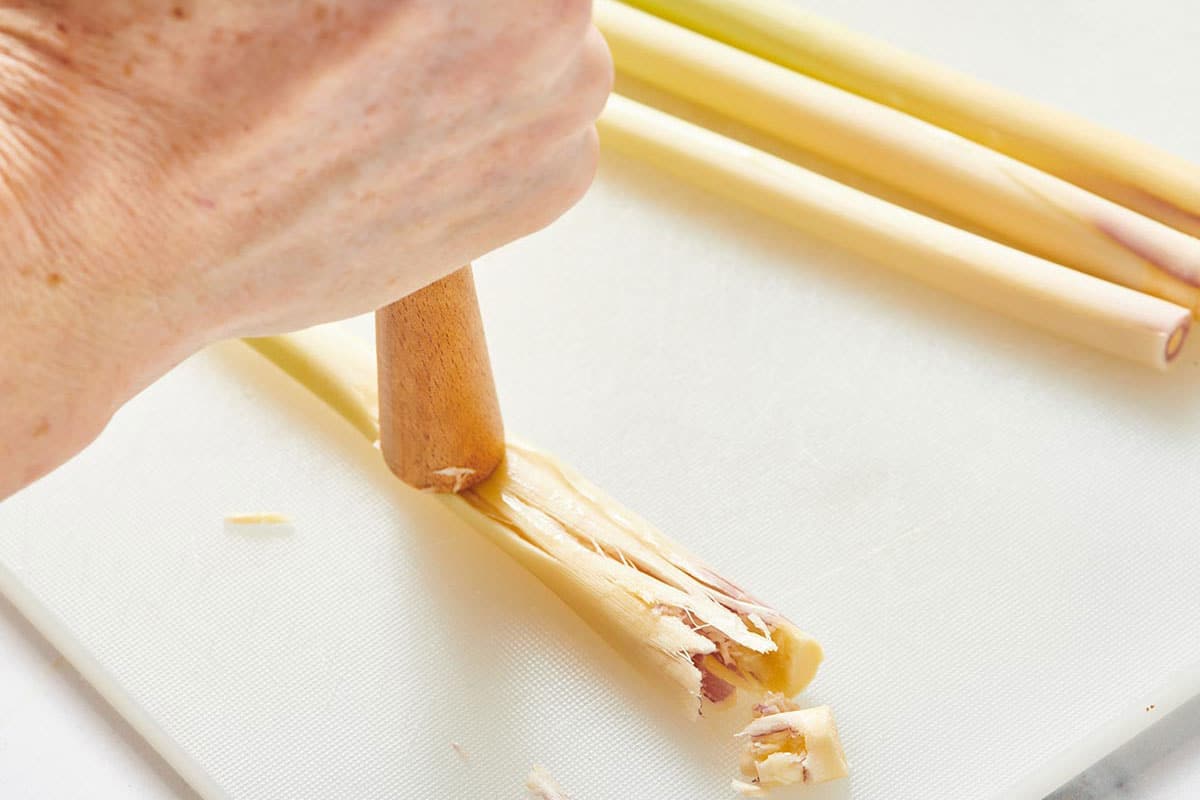
- Slice across the bottom of the stalk until you get to the skinnier, less tender upper part. Reserve that for another purpose, like a simple syrup. This can also be pounded to release more flavor, but it will not be tender enough to eat.
- Continue chopping and mincing the inner lower part of the stalk until it is as finely minced as you want it for your recipe.
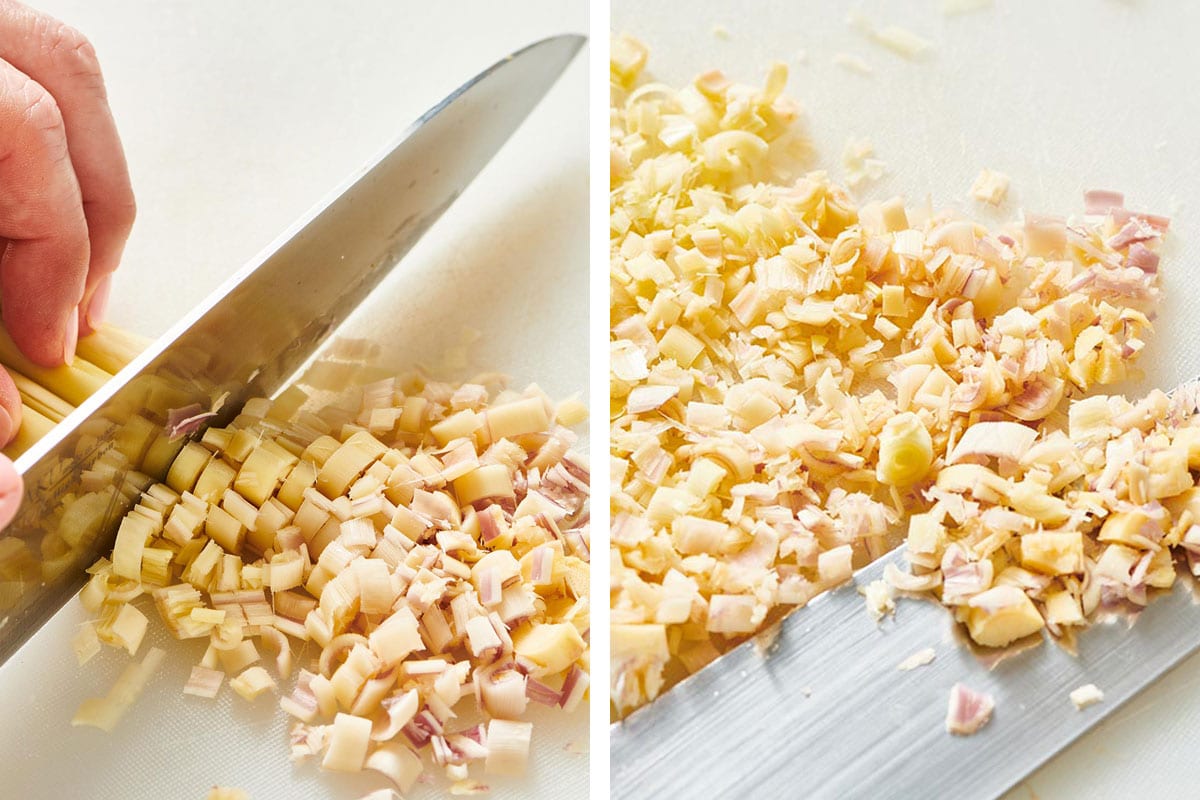
How to Store Lemongrass
Fresh lemongrass can last for a few weeks in the fridge when wrapped in a towel. You can also freeze lemongrass in its original form or precut.
Dried and powdered lemongrass should remain in their respective airtight containers in a pantry or cabinet.
FAQs
Lemongrass, originally from Asia, is a tall grass and has a lot of health benefits. It contains antioxidants and anti-inflammatory properties, according to WebMD. Realistically, you’re not using a ton of this ingredient, so it’s not going to supply that many nutrients as part of your overall diet.
The very bottom and outer layers of lemongrass are usually hard and fibrous and not very flavorful or pleasant to eat. You will want to trim the bottom and peel off the outer layers. The part of lemongrass you want to use is the inner, more tender part of the stalk.
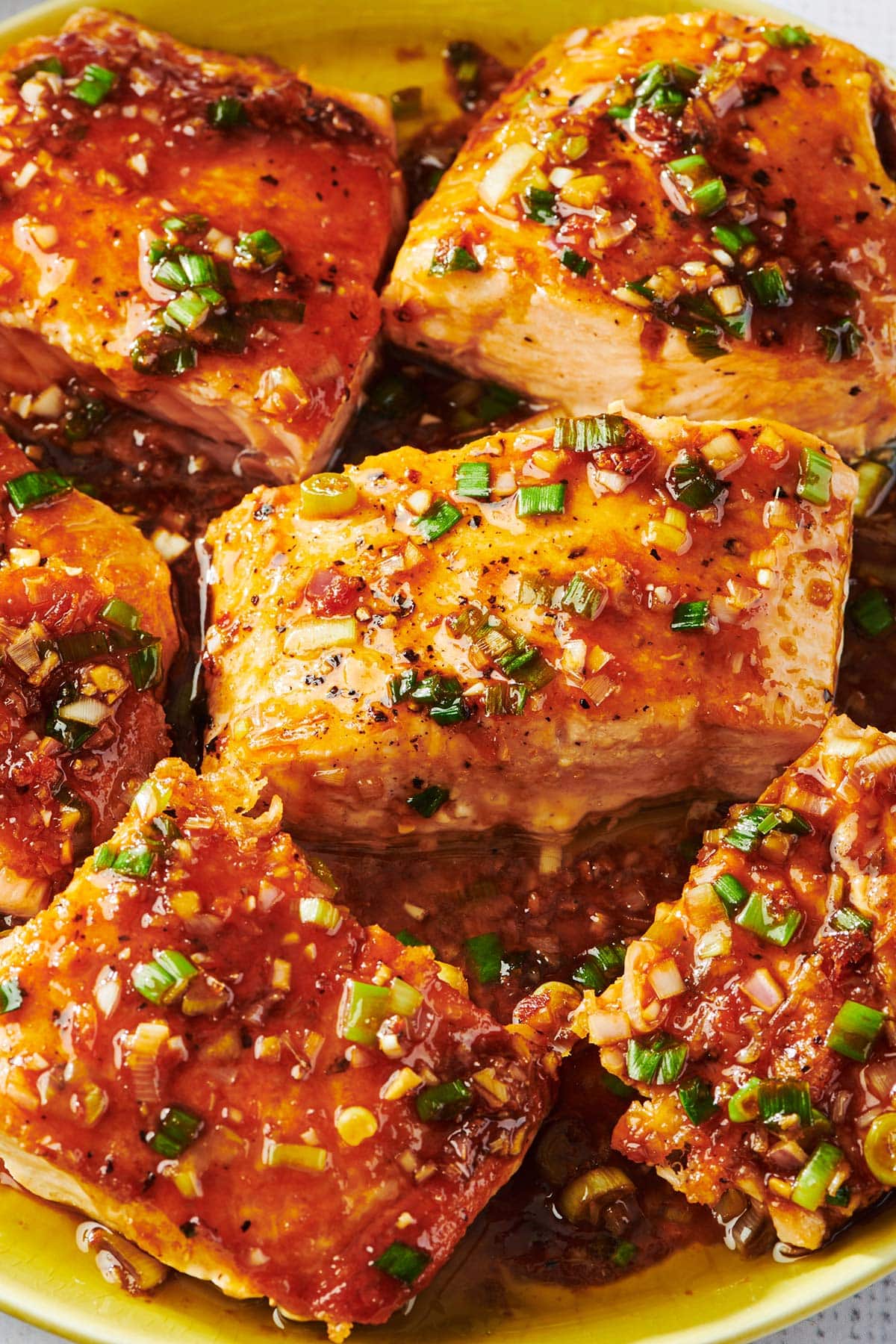
Recipes That Use Lemongrass
Pin this now to find it later
Pin It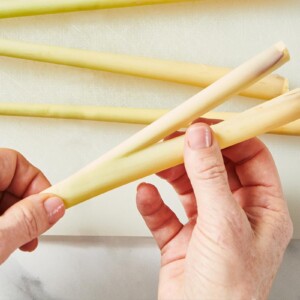
How to Cook With Lemongrass
Equipment
Ingredients
Instructions
- Slice off the root end of the stalk. Peel off one or two of the tough outer layers.
- If you want to release more of the aroma and flavor from the lemongrass (for instance, if you are using it in a marinade or a cocktail), you can pound the bottom half of the stalk with a rolling pin or a meat mallet.
- Slice across the bottom of the stalk until you get to the skinnier, less tender upper part (see Note).
- Continue chopping and mincing the inner lower part of the stalk until it is as finely minced as you want it for your recipe.
